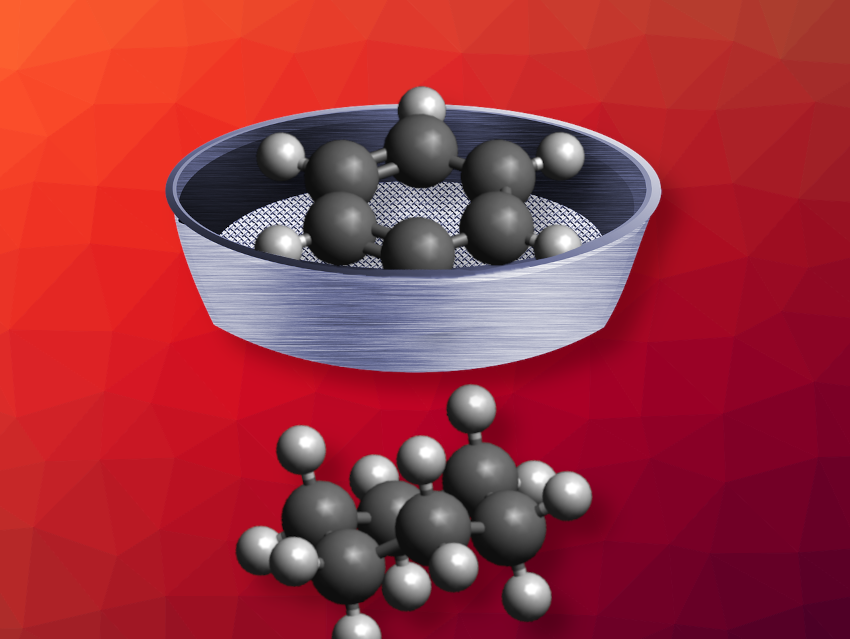Cyclohexane is widely used as a solvent and as a raw material in the chemical industry. It is often produced via the catalytic hydrogenation of benzene. Unreacted benzene can persist as an impurity after this reaction. Benzene is a carcinogen and needs to be removed from the cyclohexane product. This separation can be challenging due to the two compounds’ similar properties, such as their very close boiling points. New approaches to remove traces of benzene from cyclohexane are, thus, useful. Adsorption methods can be suitable to perform challenging separations in an energy-efficient manner, but achieving a high selectivity for benzene over cyclohexane and a high benzene uptake at the same time can be difficult.
Jian-Rong Li, Beijing University of Technology, China, and colleagues have developed a metal–organic framework (MOF) adsorbent that can act as a molecular sieve to effectively and selectively trap benzene and separate it from cyclohexane. The team synthesized the MOF from Zn(NO3)2·6H2O, adenine, and tetrakis(4-carboxyphenyl)ethylene (H4TCPE). The resulting framework features chain-like structures composed of the zinc/adenine/carboxylate units and connected by the tetraphenylethylene-type ligand backbones. The pore size distribution is centered around ca. 5.9 Å.
The developed material provides very high benzene/cyclohexane adsorption selectivities in liquid mixtures. It traps benzene effectively, even at a low content in the liquid phase or low partial pressure in the vapor phase. Traces of benzene (1000 ppm) were over 99 % removed from liquid cyclohexane in one step to obtain high-purity cyclohexane. According to the researchers, a combination of optimized pore opening sizes and high benzene affinity in the MOF allows for a high selectivity at low benzene contents.
- Removal of Trace Benzene from Cyclohexane Using a MOF Molecular Sieve,
Rui-Chao Zhao, Lin-Hua Xie, Xiao-Min Liu, Zhe Liu, Xiang-Yu Li, Jian-Rong Li,
J. Am. Chem. Soc. 2024.
https://doi.org/10.1021/jacs.4c13208




